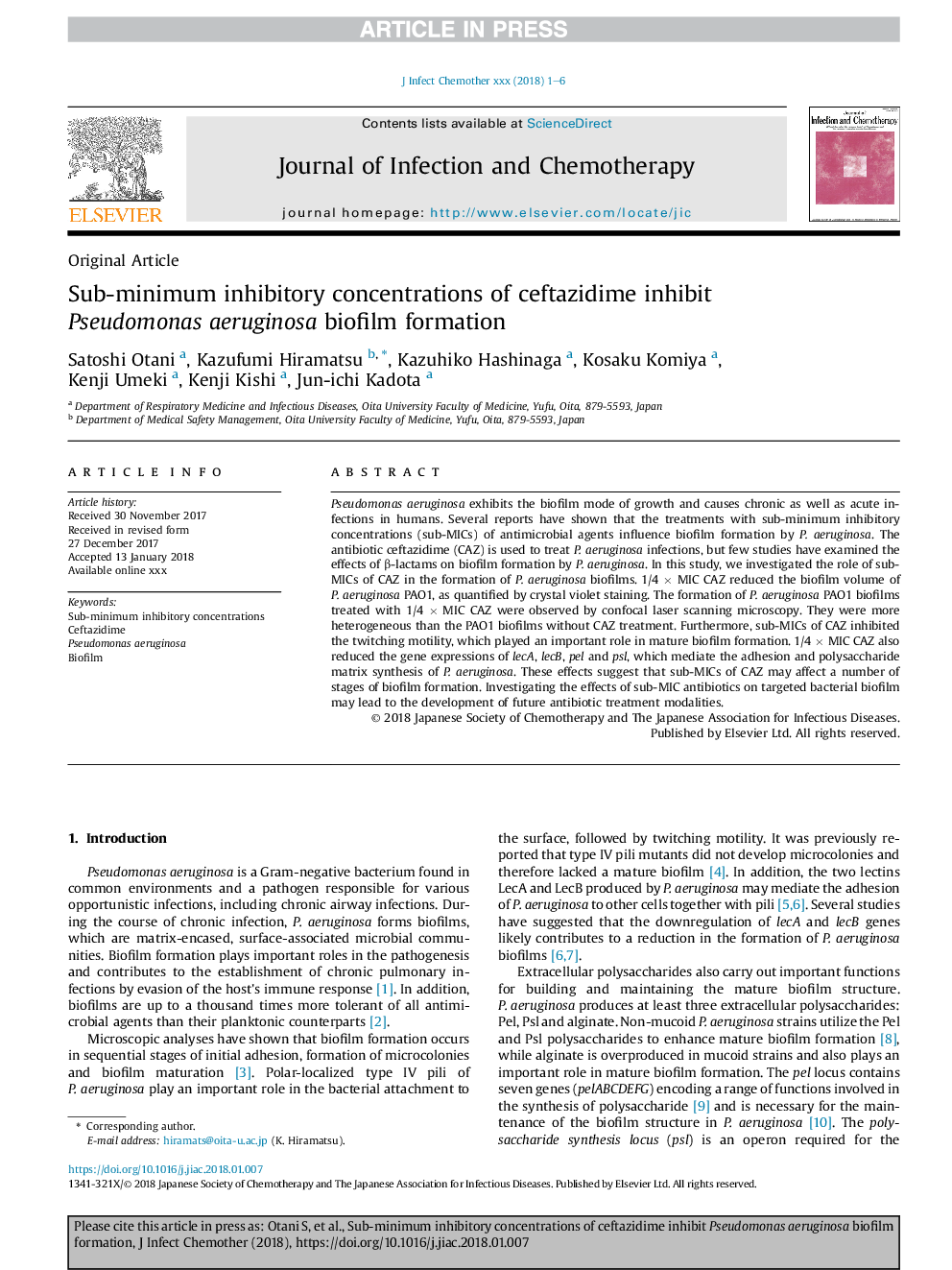| Article ID | Journal | Published Year | Pages | File Type |
|---|---|---|---|---|
| 8740626 | Journal of Infection and Chemotherapy | 2018 | 6 Pages |
Abstract
Pseudomonas aeruginosa exhibits the biofilm mode of growth and causes chronic as well as acute infections in humans. Several reports have shown that the treatments with sub-minimum inhibitory concentrations (sub-MICs) of antimicrobial agents influence biofilm formation by P. aeruginosa. The antibiotic ceftazidime (CAZ) is used to treat P. aeruginosa infections, but few studies have examined the effects of β-lactams on biofilm formation by P. aeruginosa. In this study, we investigated the role of sub-MICs of CAZ in the formation of P. aeruginosa biofilms. 1/4 Ã MIC CAZ reduced the biofilm volume of P. aeruginosa PAO1, as quantified by crystal violet staining. The formation of P. aeruginosa PAO1 biofilms treated with 1/4 Ã MIC CAZ were observed by confocal laser scanning microscopy. They were more heterogeneous than the PAO1 biofilms without CAZ treatment. Furthermore, sub-MICs of CAZ inhibited the twitching motility, which played an important role in mature biofilm formation. 1/4 Ã MIC CAZ also reduced the gene expressions of lecA, lecB, pel and psl, which mediate the adhesion and polysaccharide matrix synthesis of P. aeruginosa. These effects suggest that sub-MICs of CAZ may affect a number of stages of biofilm formation. Investigating the effects of sub-MIC antibiotics on targeted bacterial biofilm may lead to the development of future antibiotic treatment modalities.
Related Topics
Life Sciences
Immunology and Microbiology
Applied Microbiology and Biotechnology
Authors
Satoshi Otani, Kazufumi Hiramatsu, Kazuhiko Hashinaga, Kosaku Komiya, Kenji Umeki, Kenji Kishi, Jun-ichi Kadota,
